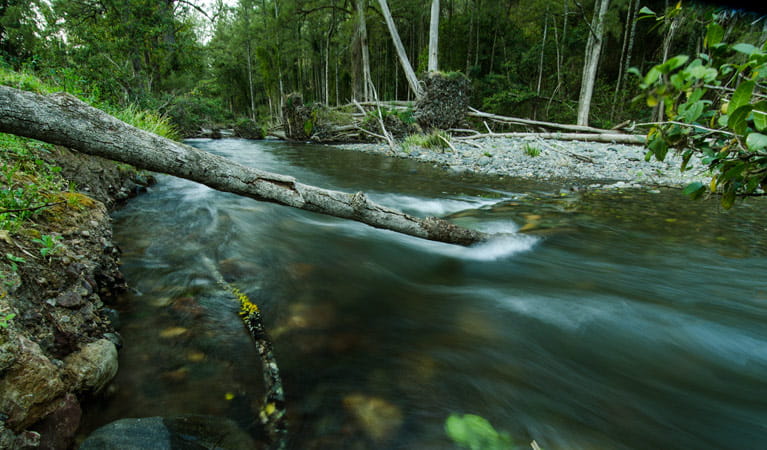Woko National Park
Woko National Park is a steep, rugged landscape with important reserves of NSW forest land, perfect for exploring on a school excursion, and great for swimming, walking, river camping and free barbecues.
Read more about Woko National Park
Woko is wild. A steep and rugged landscape with large swathes of wet and dry rainforest, rocky outcroppings, and eucalypt groves – this is a national park for people looking to escape the frantic bustle of everyday life. Jump in the car for a road trip and bring hiking boots and swimmers – Manning River will have you joining a growing population of return visitors, many of them families.
There are several hiking tracks in Woko, perfect for walking with children, but river camping and barbecues make it just as attractive a place for settling down over a long weekend. Find a perfect picnic spot and do absolutely nothing beneath the gum trees surrounded by native orchids and staghorns, or hit the current for a drift down Manning on an air mattress. Birdwatchers will also find much to celebrate here: the forest, escarpment and open grasslands are filled with beautiful species like the wedge-tailed eagle and lyrebird – don’t forget the binoculars. There are numerous animal species, too, including several threatened ones, like the brush-tailed rock wallaby, that rely on Woko National Park for their survival.
Woko’s rugged terrain can be difficult given its steepness. But clearing for cattle grazing, prior to the park’s protection, means main access points are open and accessible, particularly around Manning River. Bring the family and you’ll find something here for everyone.
Local alerts
For the latest updates on fires, closures and other alerts in this area, see https://www.nationalparks.nsw.gov.au/visit-a-park/parks/woko-national-park/local-alerts
Contact
- in the North Coast region
Woko National Park is always open but may have to close at times due to poor weather or fire danger.
-
-
Gloucester office
02 6538 5300
Contact hours: Monday to Friday, 8.30am to 4.30pm. - 59 Church Street, Gloucester NSW 2422
-
Email: npws.barringtontops@environment.nsw.gov.au
-
Gloucester office
Visitor info
All the practical information you need to know about Woko National Park.
Map
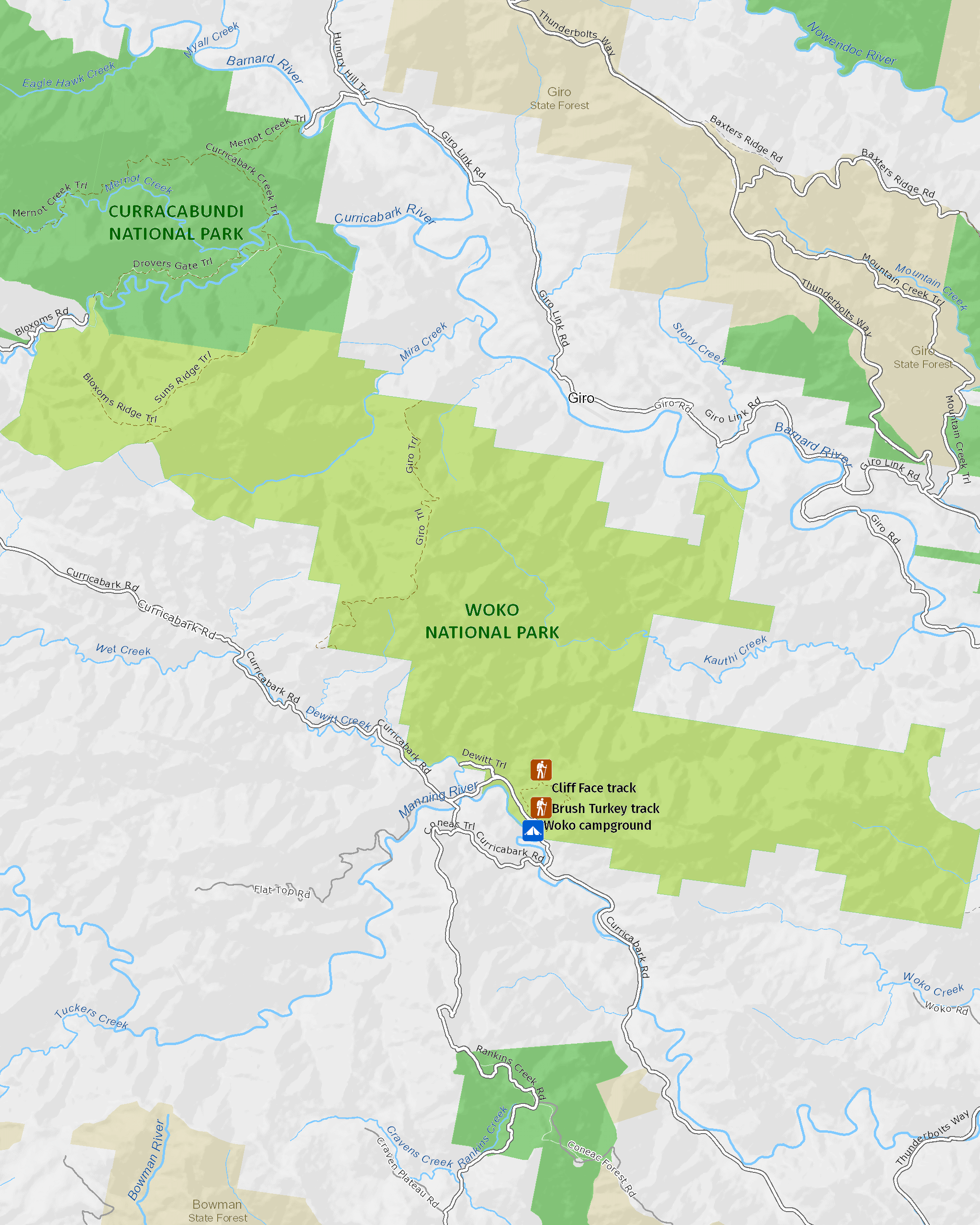
Map legend

Getting there and parking
From Gloucester:
- Drive 14km north along Thunderbolts Way
- Turn onto Curricabark Road, then drive another 14km.
- Take Flood Detour Road into Woko National Park (about 1km), then turn left into Woko campground.
Road quality
- Unsealed roads
Vehicle access
- 2WD vehicles
Weather restrictions
- All weather
By bike
Check out the Bicycle information for NSW website for more information.
Best times to visit
There are lots of great things waiting for you in Woko National Park. Here are some of the highlights.
Spring
Walk along Brush Turkey track, keeping an eye out for brush turkeys and lyrebirds scratching in the undergrowth.
Summer
Escape from the summer heat by taking advantage of Manning River for a refreshing dip, or float along the current on an air mattress.
Weather, temperature and rainfall
Summer temperature
Average
16.8°C and 25.9°C
Highest recorded
43°C
Winter temperature
Average
20.1°C and 14.4°C
Lowest recorded
-6.2°C
Rainfall
Wettest month
February
Driest month
July
The area’s highest recorded rainfall in one day
666.2mm
Facilities
Maps and downloads
Prohibited
Pets
Pets and domestic animals (other than certified assistance animals) are not permitted. Find out which regional parks allow dog walking and see the pets in parks policy for more information.
Smoking
NSW national parks are no smoking areas.
Nearby towns
Gloucester (33 km)
Famous for gold deposits and the bushranger Captain Thunderbolt, Gloucester is located in the north Hunter region, east of Barrington Tops. The nearby state forests and national parks are ideal for walking, camping and outdoor adventure sports.
Forster (105 km)
Dominated by water sports Forster is the centre of the Great Lakes area.
Taree (110 km)
Taree is a major mid North Coast city, ringed by superb beaches. It's situated on the Manning River and set against rolling hills.
Learn more
Woko National Park is a special place. Here are just some of the reasons why:
Significant forest
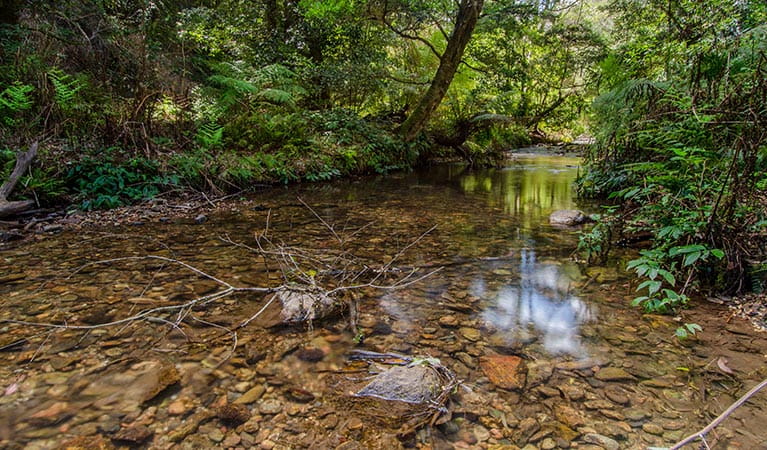
Woko conserves 8598 hectares of regionally significant forest communities, including part of one of the most extensive areas of dry rainforest in NSW. The steep hills in the park are occupied by a variety of plants and forest types, from dry sclerophyll forest to subtropical rainforest and eucalypt zones. This makes a walk here particularly fascinating, as you traverse different regions and watch the landscape transform before your very eyes.
- Brush Turkey track A short but sweet bushwalk, Brush Turkey track begins and ends at Woko campground and gives the hiker an insight into the progressive growth of a dry rainforest.
- Cliff Face track Cliff Face track provides a challenging walk through the best of Woko National Park, with dramatic scenic views towards the escarpment above.
Rich Aboriginal culture
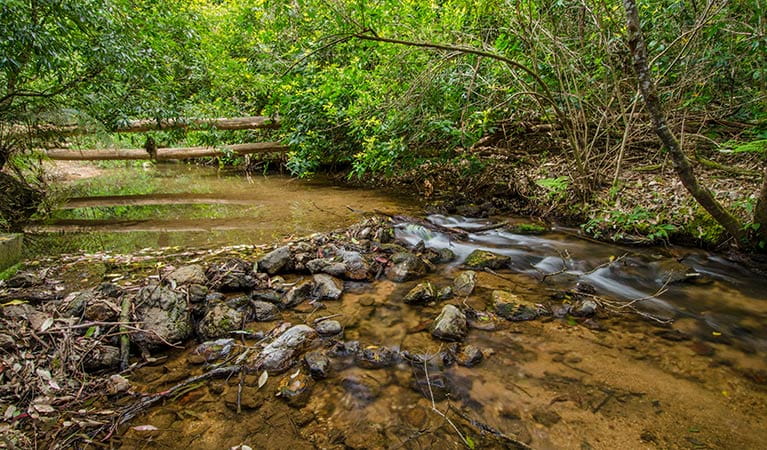
The Biripi people of the Manning Valley were the first to inhabit this area, with several open campsites having been recorded along the ridgelines and peaks of the park. Indeed, 'Woko' is thought to be a local Aboriginal name for the boobook owl. Aboriginal culture engages with the land, waterways, plants and animals of a specific place; the NSW National Parks and Wildlife Service works with local Aboriginal communities to protect this heritage for future generations.
Rare animals
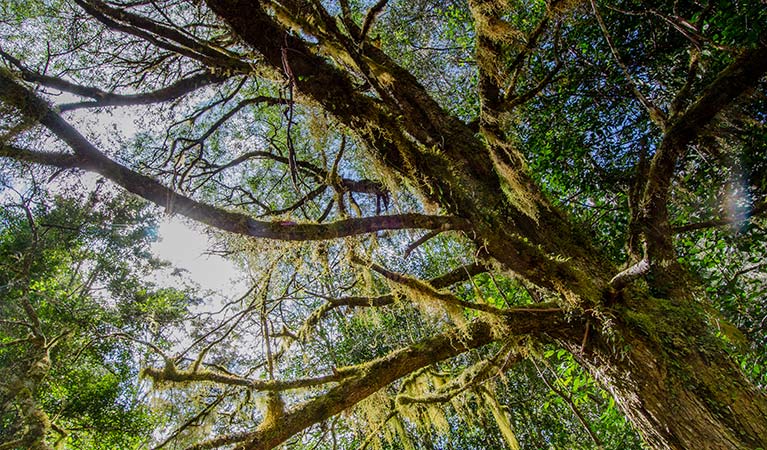
Woko National Park contains a number of threatened or endangered species, including the brush-tailed rock wallaby, masked owl, and wompoo pigeon. This is, in fact, prime territory for birdwatching, with lyrebirds, brush turkeys, and wedge-tailed eagles regularly spotted in the park. Largely, this is due to the variety of environments encompassed by Woko: the grey fantail, for example, favours the mid-layer of the forest, while the willy wagtail enjoys the openness of the forest edge and spaces created by cattle clearing.
- Brush Turkey track A short but sweet bushwalk, Brush Turkey track begins and ends at Woko campground and gives the hiker an insight into the progressive growth of a dry rainforest.
- Cliff Face track Cliff Face track provides a challenging walk through the best of Woko National Park, with dramatic scenic views towards the escarpment above.
Education resources (1)
What we're doing
Woko National Park has management strategies in place to protect and conserve the values of this park. Visit the OEH website for detailed park and fire management documents.
General enquiries
- National Parks Contact Centre
- 7am to 7pm daily
- 1300 072 757 (13000 PARKS) for the cost of a local call within Australia excluding mobiles
- parks.info@environment.nsw.gov.au
Contact
- in the North Coast region
Woko National Park is always open but may have to close at times due to poor weather or fire danger.
-
-
Gloucester office
02 6538 5300
Contact hours: Monday to Friday, 8.30am to 4.30pm. - 59 Church Street, Gloucester NSW 2422
-
Email: npws.barringtontops@environment.nsw.gov.au
-
Gloucester office

